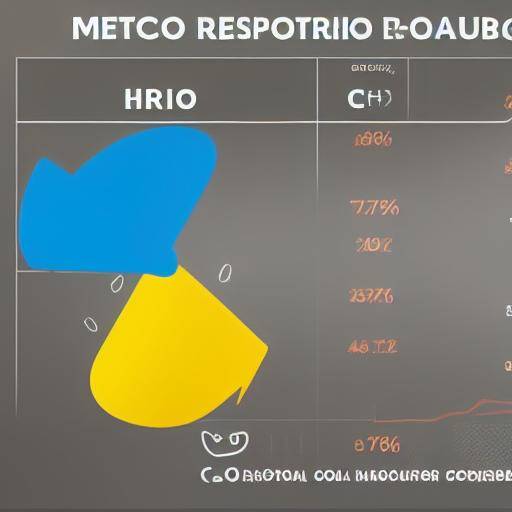
Introduction
In the world of investments, the combination of investment funds in a portfolio is a key strategy for maximizing performance and reducing risk. In this article, we will explore the importance of strategy, diversification and balance by combining investment funds. From its history and evolution to its practical application in the current investment landscape, we will discover how these facets can boost the growth of your investment portfolio.
History and Background
Investment funds have their roots in the 18th century, when the first collective investment funds were established in Europe. Since then, its popularity has increased significantly, transforming the way people invest their money. The history of investment funds is a fascinating amalgam of strategy, overcome challenges and constant evolution over the centuries.
During the Great Depression in the 1930s, investment funds experienced significant challenges but managed to adapt and survive. Since then, they have constantly evolved to address the changing needs of investors and the financial landscape.
Deep analysis
The strategy in the combination of investment funds is critical to maximizing performance and minimizing risk. Establishing a clear strategy involves identifying long-term financial goals, the time horizon and the level of risk tolerance. Diversification plays a crucial role in combining different types of funds with variable correlations, which helps mitigate the risk. On the other hand, balance implies maintaining an optimal asset allocation according to the investor's needs.
Comprehensive review
The combination of different investment funds can be applied in various ways. From geographical diversification to sectoral diversification, there are numerous strategies to balance an investment portfolio. Some common strategies include asset allocation, passive or active investment, and tactical asset management. Each approach has its advantages and challenges, so it is crucial to understand the implications of each strategy.
Comparative analysis
The strategy, diversification and balance in the combination of investment funds have common elements but also significant differences. While the strategy establishes a general plan of action, diversification focuses on asset distribution among different types of investment. The balance, on the other hand, seeks to maintain an optimal proportion of assets in order to achieve the expected objectives. The effective combination of these three facets is essential for optimizing an investment portfolio.
Practical Tips and Actions
By combining investment funds, it is crucial to consider factors such as age, financial objectives, risk tolerance and market conditions. Some practical tips include diversifying between different asset classes, maintaining a long-term time horizon and conducting periodic portfolio reviews to maintain balance. The key is to adopt a disciplined approach and follow a sound strategy at all times.
Industry Perspectives and Expert Reviews
Industry experts emphasize the importance of maintaining a broad perspective by combining investment funds. With the constant evolution of the market and technological advances, it is essential to adapt and adjust the strategy to keep abreast of current trends. In addition, different experts may have divergent views on how best to combine investment funds, highlighting the importance of obtaining multiple views before making significant financial decisions.
Case Studies and Practical Applications
Case studies provide concrete examples of how the investment portfolio strategy, diversification and balance can significantly impact performance. These real cases show how a careful combination of investment funds can prepare investors to face different market scenarios and achieve their long-term financial goals.
Future Trends and Predictions
Future trends in the combination of investment funds aim at a more personalized and sustainable approach. With technological advances such as artificial intelligence and data analysis, investment strategies are rapidly evolving. In addition, sustainable and responsible investment is expected to play an increasingly important role in the combination of investment funds, reflecting the shift towards sustainable and ethical values in the financial world.
Conclusion
The combination of investment funds requires careful consideration of the strategy, diversification and balance to achieve optimal results. By understanding current history, strategies and trends, investors can create strong portfolios that will enable them to achieve their financial goals. Staying informed and seeking expert advice are essential steps in this journey towards financial success.
Frequently asked questions
Why is it important to have a strategy by combining investment funds?
The strategy provides clear direction and establishes long-term financial objectives. It helps investors to make informed decisions and maintain their course for periods of market volatility.
What is the role of diversification in the combination of investment funds?
Diversification helps mitigate risk by distributing investment in different assets and asset classes. This can reduce exposure to the volatility of a single market or sector.
How can I balance my investment fund portfolio?
The balance of the portfolio involves maintaining a distribution of assets that aligns with financial objectives and the level of risk tolerance. Regular adjustment of asset allocation is key to maintaining balance.
What are the main challenges in combining investment funds?
Common challenges include selecting the appropriate combination of funds to achieve specific goals, adapting to market fluctuations and maintaining discipline in the midst of uncertainty.
Is there a "universal" investment fund combination strategy that is effective for all investors?
There is no single strategy that is effective for all investors, as financial needs and circumstances vary. It is essential to customize the strategy according to the objectives and tolerance to the risk of each investor.
How can I assess whether my investment fund combination strategy is working?
The periodic evaluation of portfolio performance, as well as cost analysis, risks and returns, are effective ways of determining whether the strategy is meeting the established objectives.
Conclusion: The combination of investment funds is a crucial facet of the investment process. In considering strategy, diversification and balance, investors can build resilient portfolios that allow them to navigate the changing financial landscape and achieve their long-term financial goals.






















































